How Intelligent Document Scanning Maximizes Operational Efficiency and Throughput
16 min read
60-Second Summary
BPOs spending the majority of their budget on labor can achieve substantial ROI within three years by implementing OPEX intelligent scanning solutions. Manual document processing creates significant per-document costs, high error rates, and leaves organizations vulnerable to expensive data breach incidents. OPEX intelligent scanning systems address these challenges by automating document processing workflows, dramatically reducing labor costs, virtually eliminating errors, and delivering rapid payback. Organizations implementing these solutions typically see significant operational cost reductions while simultaneously improving accuracy, compliance, and scalability—positioning them for sustainable competitive advantage in the rapidly growing global BPO market.
Introduction
The Document Processing Challenge
Today’s Business Process Outsourcing (BPO) operations handle thousands of documents daily, from invoices and claims to contracts and compliance forms. Each document represents both an opportunity and a cost center. Manual processing drains resources, introduces errors, and creates bottlenecks that frustrate clients and strain operational teams.
The statistics paint a stark picture across the industry. Labor expenses constitute 60-75% of BPO operational budgets, while manual document processing can cost between $15-30 per document. Data breaches cost companies an average of $4.45 million per incident, and legacy systems require constant operator oversight and are prone to human error that compounds these costs.
However, there’s a significant opportunity available. Intelligent automation savings average between 25% and 40% for businesses implementing the technology. For BPO providers focused on operational excellence and cost optimization, the question isn’t whether you can afford to upgrade—it’s whether you can afford not to.

Chapter 1
The True Cost of Manual Document Processing
Hidden Costs Beyond Labor
While salary expenses are obvious, the true cost of manual processing extends far beyond hourly wages. Direct labor costs include agent compensation ranging from $15-$25 hourly in the U.S. and $6-$15 hourly offshore, with benefits packages adding 20-30% to base salaries. Training and onboarding new staff for document processing roles represents additional ongoing expenses that many organizations underestimate.
Indirect operational costs create substantial hidden expenses. Document preparation time, exception handling requiring supervisor intervention, quality assurance and error correction, storage and retrieval of physical documents, and compliance monitoring and audit preparation all consume resources without directly contributing to revenue generation.
Risk and opportunity costs represent perhaps the most significant hidden expenses. Processing delays impacting client service-level agreements (SLAs) can result in contract penalties and relationship strain. Error-related rework damages client confidence while internal teams scramble to correct mistakes. Security vulnerabilities with manual handling expose organizations to potential breaches, and the inability to scale efficiently during peak periods limits growth opportunities.
The Manual Processing Bottleneck
Chapter 2
Quantifying ROI with intelligent scanners
Real-world ROI Metrics
Recent analysis shows IDP implementation delivering substantial ROI over three years, with rapid payback periods. These impressive returns stem from multiple areas of cost reduction and productivity improvement that compound over time.
Direct cost reductions represent the most measurable benefits. Organizations typically see significant reduction in manual processing time, while error rates drop dramatically from typical manual levels to near-zero performance. Compliance costs can be substantially reduced through automated processes that eliminate manual oversight requirements and streamline audit preparation.
Productivity gains extend beyond simple time savings. AI-powered virtual agents can substantially reduce Average Handle Time and operational costs. Automated document classification and routing eliminate bottlenecks, while the elimination of manual data entry allows staff to focus on higher-value activities that directly contribute to client satisfaction and business growth.
ROI Calculation Example
For a BPO processing 100,000 documents annually:
Current Manual Processing Costs:
Labor: | $ 300,000/year |
Error correction: | $ 300,000/year |
Storage and handling: | $ 300,000/year |
Total Annual Cost: | $ 300,000/year |
With OPEX Intelligent Scanning:
Scanner investment: | $ 150,000 (one time) |
Annual maintenance: | $ 15,000 |
Reduced labor (40% savings): | $ 180,000 |
Reduced errors (90% savings): | $ 5,000/year |
Total Annual Cost: | $ 200,000 |
Annual Savings: $175,000 ROI Year 1: 17% ROI Year 3: 247% Payback Period: 10 months
Chapter 3
Beyond Labor: Cutting Storage and Compliance Costs
Digital Transformation Benefits
Intelligent scanning delivers value beyond labor reduction through comprehensive digital transformation. Storage cost elimination represents one of the most immediate benefits, as organizations can eliminate physical storage requirements, reduce real estate footprint, enable remote access and collaboration, and improve disaster recovery capabilities.
Compliance automation provides ongoing operational benefits. Automated audit trails and documentation streamline regulatory requirements, while AI-powered security tools see up to 65% cost reduction in breach remediation. Consistent policy enforcement across all documents reduces human error, and reduces regulatory risk and penalty exposure protects long-term profitability.
Scalability advantages become increasingly valuable as organizations grow. The ability to handle volume fluctuations without proportional staff increases provides operational flexibility. Rapid deployment capabilities support new clients or service lines, while cloud-based access enables global operations. Integration with existing BPM and workflow systems ensures that investments enhance rather than replace current technology infrastructure.
Security and Risk Mitigation
The average cost of a data breach in the United States is $9.44 million, making security a critical consideration for any document processing investment. Intelligent scanning systems provide enhanced security through role-based access controls and encryption that far exceed the capabilities of manual processing systems. Built-in compliance adherence ensures that regulatory frameworks are consistently followed without requiring constant manual oversight.
Complete document trails and processing logs provide audit readiness that manual systems cannot match. Every document interaction is recorded and traceable, providing the documentation necessary for regulatory compliance and internal quality assurance. The elimination of physical document vulnerabilities removes entire categories of security risks that plague traditional processing methods.
Chapter 4
How to Build a Business Case for Scanning Investments
Key Stakeholder Benefits
Executive leadership benefits from clear ROI metrics and payback periods that support strategic decision-making. Competitive differentiation through technology leadership positions the organization ahead of competitors still relying on manual processes. Reduced operational risk and improved compliance protect the organization from costly regulatory violations, while enhanced client satisfaction and retention directly impact revenue growth.
Operations teams experience reduced manual workload and increased job satisfaction as they transition from repetitive data entry to more engaging, strategic work. Consistent, error-free processing workflows eliminate the frustration of constant rework and exception handling. Real-time visibility into processing status enables proactive management and client communication, while the ability to focus on higher-value activities improves both individual performance and overall team productivity.
Finance teams appreciate predictable operational costs and improved margins that enable better financial planning and reporting. Reduced compliance and audit expenses free up budget for strategic investments, while better cash flow through faster processing improves working capital management. Enhanced financial reporting capabilities provide the detailed analytics necessary for continuous improvement and strategic planning.
Intelligent scanning not only reduces Manual workload and compliance risk but also delivers measurable ROI through cost savings, improved client satisfaction, and scalable growth.
Implementation Justification Framework
Building a compelling business case requires a systematic approach to analyzing current state challenges and future state opportunities. The current state analysis should document processing volume and costs, error rates and correction expenses, compliance and audit costs, and client satisfaction metrics. This baseline provides the foundation for calculating potential improvements and ROI.
Future state projections demonstrate the transformational potential of intelligent scanning. Processing capacity with automation typically increases significantly while maintaining or improving quality standards. Projected cost reductions should account for both direct labor savings and indirect operational improvements. Quality and accuracy improvements reduce rework and enhance client relationships, while scalability and growth enablement provide the foundation for business expansion.
Investment analysis must consider all implementation costs, including hardware and software, implementation and training expenses, and ongoing maintenance and support. However, the analysis should also quantify risk mitigation value, as the cost of security breaches, compliance violations, and operational disruptions far exceeds the investment in modern scanning technology.
Chapter 5
Case Study Snapshot
Real-World Case Study
Regional BPO Achieves 300% ROI
The Challenge
An Post Commerce Business Solutions, a mid-size business process outsourcing company and wholly-owned subsidiary of An Post (Ireland’s postal service), provides archival, mailroom, storage, and scanning services. The company required four employees to manually sort documents into trays, with pre-sorted documents scanned using tabletop scanners and manually indexed and categorized. This labor-intensive process limited throughput to just 130 sensitive documents per hour and created bottlenecks that prevented scalable growth.
The Solution
An Post Commerce Business Solutions implemented the OPEX Falcon®V+ intelligent document scanner powered by CertainScan® software. OPEX’s Professional Services team provided pre-sales demos, workflow solutions, and admin training to maximize scanner value. The new system enabled one operator to prep and scan documents directly from folders, eliminating the need for them to go through multiple people and locations. CertainScan software enabled easy indexing and categorization with the touch of a button, and its custom file output integrated seamlessly with various platforms.
The Results
The implementation delivered measurable improvements across all key performance indicators. An Post Commerce Business Solutions achieved a 33% gain in efficiency while retaining the same number of staff. Processing speed nearly doubled from 130 sensitive documents per hour to 250 per hour with the OPEX scanner. For a major customer project, the FalconV+ scanner and CertainScan software automatically detected four types of documents and sorted them based on barcodes and credit card details.
The operational impact extended beyond speed improvements. The system could handle 20% of volume consisting of incoming mail stored in plastic packets by opening the packet, running contents through the scanner, and converting to multi-page PDFs with minimal prep. By 2024, the company had implemented a second FalconV+ scanner and scanned over 2.4 million pages, demonstrating the scalability and reliability of the solution.
Strategic benefits positioned the company for continued growth. An Post Commerce Business Solutions can now provide its parent company with a best-in-class scan and archive solution that adequately meets the needs of the large semi-state enterprise while staying competitive and bidding for more projects without increasing staff costs. Employee satisfaction improved as staff enjoy working with the FalconV+ scanner and CertainScan software, making it an ideal solution for future projects.
Chapter 6
Implementation That Works: Best Practices for Success
Planning Phase Excellence:
Successful implementation begins with comprehensive stakeholder alignment. Executive sponsorship and change management support ensure that the project receives the necessary resources and organizational commitment. Cross-functional teams, including IT, operations, and compliance, bring diverse perspectives that identify potential challenges before they impact implementation. Clear communication of benefits and timeline expectations manages stakeholder expectations and builds support for the initiative. Staff involvement in solution selection and design creates buy-in and reduces resistance to change.
Technical preparation requires careful attention to integration planning with existing systems, data migration and validation procedures, security and compliance configuration, and comprehensive testing protocols with clear acceptance criteria. Organizations that invest thoroughly in the planning phase activities consistently achieve faster implementation timelines and better long-term results.
Deployment Strategy:
A phased implementation approach minimizes risk while maximizing learning opportunities. Starting with a pilot program focused on the highest-volume document types allows teams to refine processes and identify optimization opportunities before full-scale deployment. Process optimization based on pilot results ensures that lessons learned are incorporated into broader implementation plans. Gradual rollout to additional document types and locations provides a manageable change while building organizational confidence in the new system. Full deployment across all operations represents the culmination of systematic planning and execution.
Success metrics should be established early and monitored throughout implementation. Processing time reduction targets provide clear benchmarks for operational improvement. Quality and accuracy improvements demonstrate value to clients and internal stakeholders. Cost savings achievement validates the business case, while staff productivity and satisfaction measures ensure that the human impact of change is positive.
Change Management Excellence:
Staff training and support represent critical success factors for any technology implementation. Comprehensive training on new systems and processes ensures that employees have the knowledge and confidence to succeed in their evolving roles. Clear role definitions in the new workflow eliminate confusion and provide direction for professional development. Ongoing support and troubleshooting resources address challenges quickly before they impact productivity. Recognition programs for early adopters and achievers create positive momentum and encourage broader acceptance of new processes.
Client communication requires proactive engagement to maximize the value of operational improvements. Demonstrating enhanced capabilities and benefits helps clients understand the investment in their success. Service level agreement updates should reflect new capabilities and improved performance standards. Regular feedback collection and response creates collaborative relationships that strengthen client retention and satisfaction.
Chapter 7
OPEX Advantage: Why Our Solutions Lead the Market
Proven Technology Leadership
OPEX has been innovating document scanning solutions for over 50 years, delivering industry-leading speed that enables organizations to process more documents in less time. Exceptional accuracy minimizes errors and rework requirements, while flexible integration ensures seamless connection to existing systems. Comprehensive support provides expert guidance from planning through optimization, ensuring that investments deliver maximum value.
Product Portfolio for Every Need
The OPEX product portfolio addresses diverse organizational requirements with specialized solutions. The Falcon®+ RED™ provides high-speed production scanning for maximum throughput in high-volume environments. The Gemini® offers versatile desktop scanning for smaller volumes and distributed processing needs. The Model 72™ delivers a mid-range solution that balances capacity and footprint for medium-sized operations. The OMATION® Model 606™ provides enterprise-grade processing capabilities for large-scale operations with demanding requirements.
Each system includes intelligent document processing capabilities that go beyond simple scanning to provide comprehensive document management. Advanced image enhancement technology ensures optimal quality regardless of source document condition. Flexible workflow integration options allow organizations to enhance existing processes rather than replace them entirely. Comprehensive security and compliance features protect sensitive information while meeting regulatory requirements.
Partnership Commitment
Unlike vendors who simply sell equipment, OPEX provides comprehensive partnership support throughout the entire implementation lifecycle. Detailed ROI analysis and business case support help organizations build compelling justifications for investment. Implementation planning and project management ensure that deployments proceed smoothly and on schedule. Comprehensive training and change management support address the human aspects of technology adoption. Ongoing optimization and performance monitoring ensure that systems continue to deliver maximum value over time.
OPEX Document Imaging Solutions
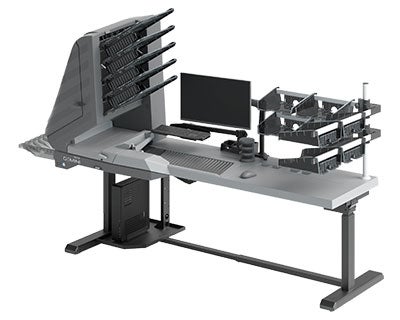
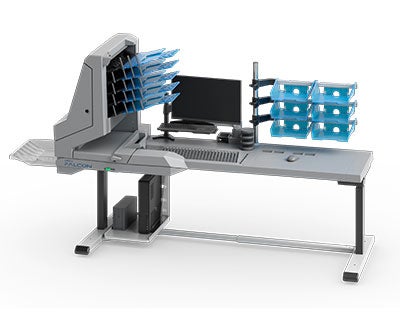
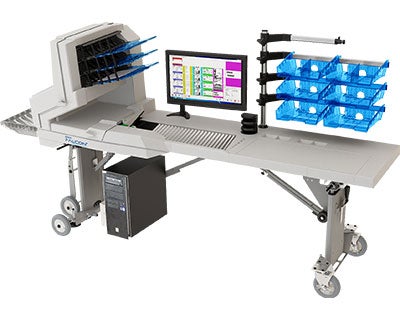
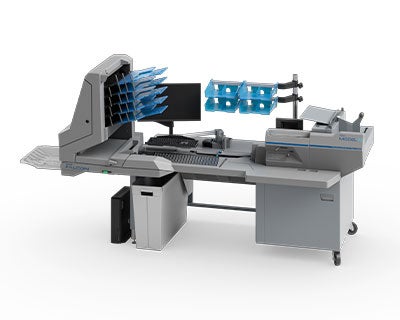
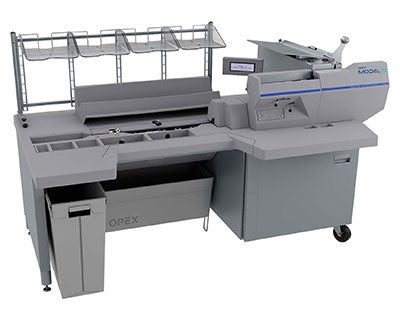
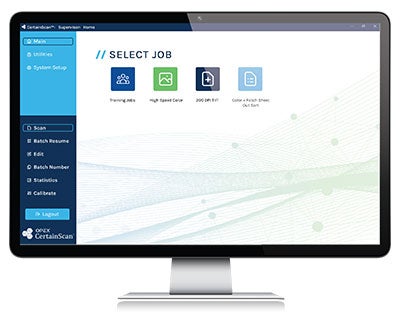
Chapter 8
ROI Recap
Competitive Imperative
The BPO industry is evolving rapidly. The global BPO sector topped $390 billion in revenue in 2024, with an annual growth rate of 4.67%. Success in this competitive landscape requires operational excellence, cost efficiency, and the ability to scale rapidly.
Intelligent document scanning isn’t just about technology—it’s about transforming your business for sustainable competitive advantage.
Key Takeways
The financial impact of intelligent document scanning is substantial and measurable. Average ROI exceeds 260% over three years, with payback periods typically ranging from 7-12 months. Cost reductions of 25-40% in document processing operations provide immediate bottom-line benefits, while elimination of compliance penalties and audit costs protect long-term profitability.
Operational benefits extend far beyond cost savings. Dramatically improved processing speed and accuracy enhance client satisfaction and competitive positioning. Enhanced scalability and flexibility support business growth without proportional increases in operational complexity. Better employee satisfaction through reduced manual work improves retention and productivity, while superior client satisfaction through faster, more reliable service strengthens long-term relationships.
Strategic advantages position organizations for sustained success in an increasingly competitive market. Competitive differentiation through technology leadership creates barriers to entry for competitors and value propositions for clients. Enhanced ability to win and retain clients stems from demonstrable operational superiority. The foundation for future growth and expansion is established through scalable, efficient processes. Risk mitigation and regulatory compliance protect the organization from costly disruptions and penalties.
The Path Forward
The evidence is clear that intelligent document scanning delivers measurable, significant ROI for BPOs. The question isn’t whether to invest, but how quickly you can implement these productivity-enhancing solutions. Every day of delayed implementation represents continued high operational costs, missed opportunities for client satisfaction improvements, competitive disadvantage versus early adopters, and lost potential for business growth and expansion.
Smarter Investments. Bigger Returns.
247%
ROI in 3 Years
Payback in just 7-12 months.
40%
Cost Reduction
Faster, error-free document processing
Stronger
Competitive Edge
Scale growth, win clients, stay compliant
Conclusion
Take Action: Calculate Your ROI Now
Ready to Transform Your Operations?
Don’t let manual document processing hold back your BPO’s growth and profitability. OPEX’s intelligent scanning solutions have helped hundreds of service providers dramatically improve their operations and bottom line.
Our document processing specialists are ready to help you analyze your current processing costs and inefficiencies, design an optimal scanning solution for your operations, develop a comprehensive implementation plan and timeline, and calculate your projected ROI and payback period.
Other Resources You Might Find Helpful
NEXT LEVEL AUTOMATION
Unlock Operational Efficiency with OPEX
OPEX is powering the future of automation. Contact us to learn more about how our vertically integrated automated solutions can help take your business to new heights.



